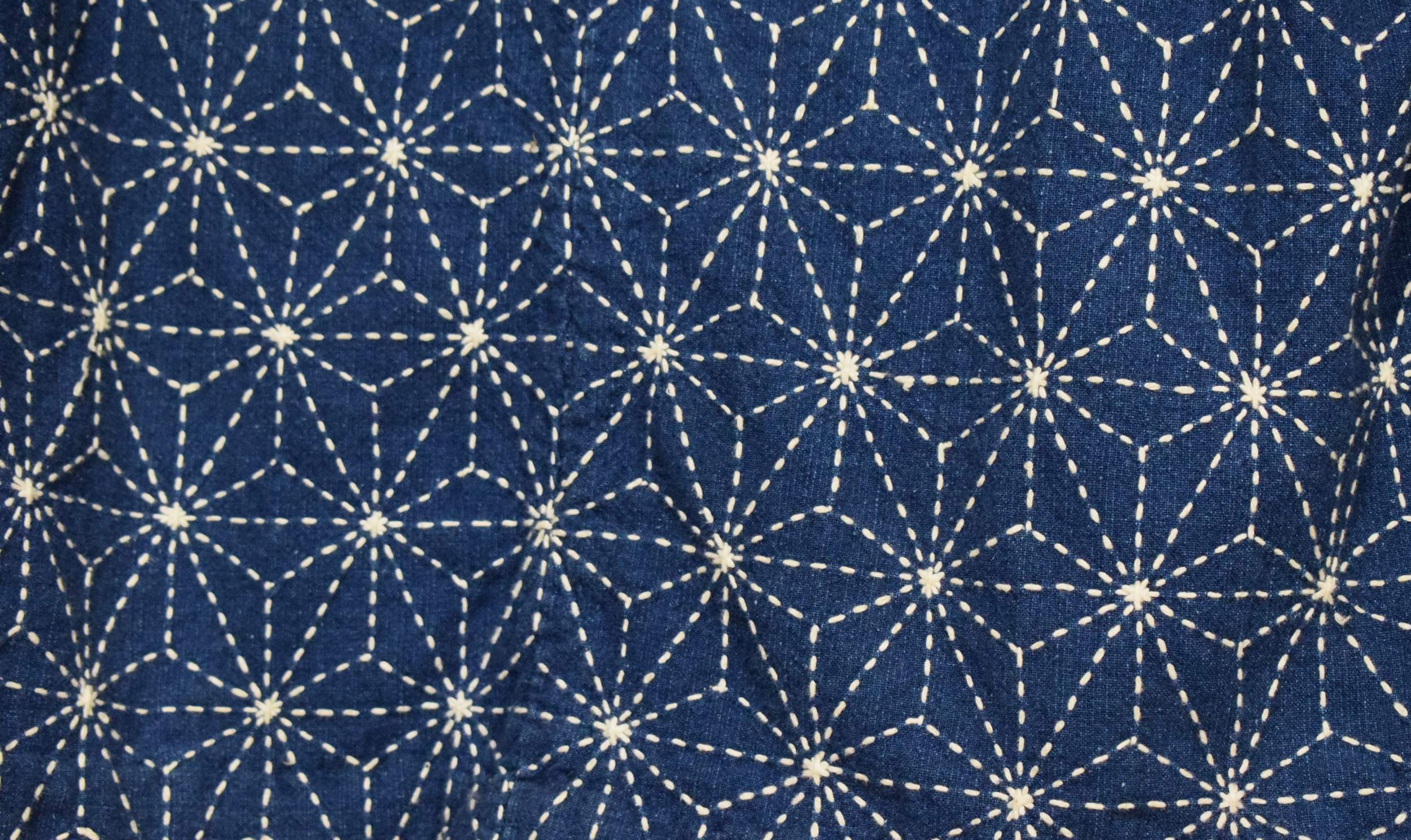What is Sashiko?
Sashiko is a type of embroidery that originated in the poor farming communities of Japan. It grew from the practice of mending clothes with rows of running stitch (which strengthened and added warmth).
At some point the practitioners realised they could make more interesting patterns and so Sashiko was born.
There are two types:
Moyozashi (pattern) sashiko - These patterns are created using evenly spaced running stitches and the stitches are not supposed to touch each other at any point. Patterns are often representative of items that were in daily use and which all Japanese people would have been familiar with.
Hitomezashi (one stitch) sashiko - These patterns are always stitched on a grid to create joined up square patterns but the practice also involved weaving threads through a base structure to make much more complicated and colourful textiles.
Skill in Sashiko was highly prized amongst farming communities, with the best practitioners much more likely to receive a marriage proposal!
Originally stitched with white thread on an indigo blue background (due to limited resources) the patterns were supposed to represent snow lying on the ground in the winter.
Sashiko is derived from the Japanese word “Sasu” which means “to stab” or “to pierce” and refers to the sewing motion when stitching.


